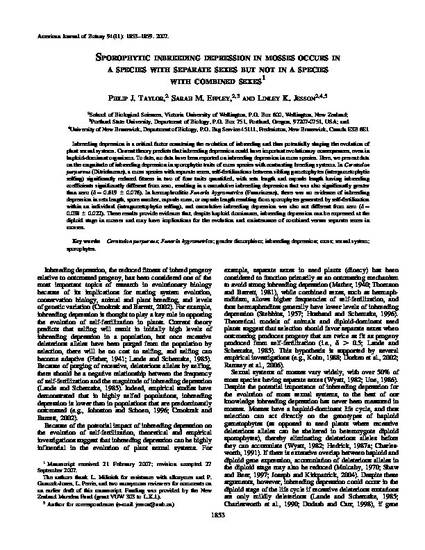
- Conservation biology,
- Mosses -- Genetics,
- Mosses -- Inbreeding,
- Funaria hygrometrica -- Reproduction
Inbreeding depression is a critical factor countering the evolution of inbreeding and thus potentially shaping the evolution of plant sexual systems. Current theory predicts that inbreeding depression could have important evolutionary consequences, even in haploid-dominant organisms. To date, no data have been reported on inbreeding depression in moss species. Here, we present data on the magnitude of inbreeding depression in sporophytic traits of moss species with contrasting breeding systems. In eratodon purpureus (Ditrichaceae), a moss species with separate sexes, self-fertilizations between sibling gametophytes (intergametophytic selfing) significantly reduced fitness in two of four traits quantified, with seta length and capsule length having inbreeding coefficients significantly different from zero, resulting in a cumulative inbreeding depression that was also significantly greater than zero ([delta]= 0.619 ± 0.076). In hermaphroditic Funaria hygrometrica (Funariaceae), there was no evidence of inbreeding depression in seta length, spore number, capsule mass, or capsule length resulting from sporophytes generated by self-fertilization within an individual (intragametophytic selfing), and cumulative inbreeding depression was also not different from zero ([delta]=0.038 ± 0.022). These results provide evidence that, despite haploid dominance, inbreeding depression can be expressed at the diploid stage in mosses and may have implications for the evolution and maintenance of combined versus separate sexes in mosses.

This is the publisher's final PDF. Originally appeared in the American Journal of Botany, published by the Botanical Society of America. Article can be found at http://www.amjbot.org/content/94/11/1853.full.